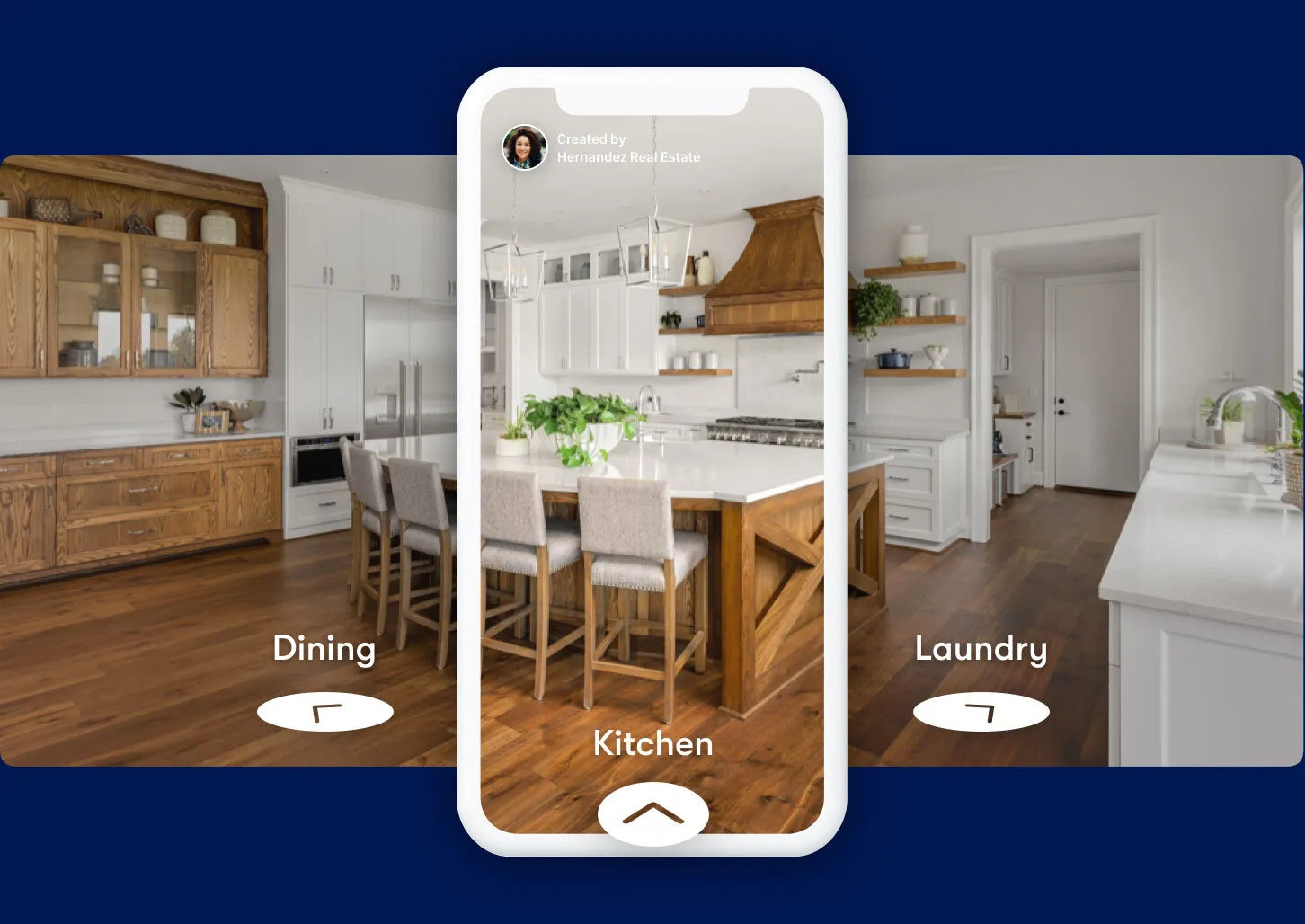Virtual Tours vs Traditional Site Visits: Cost-Savings and Planning Advantages

For decades, the default way to inspect a site, review progress, or assess a property has been the same: you show up in person. You walk the space, take notes, snap a few photos, and gather impressions to discuss later. It’s a ritual embedded in real estate, construction, manufacturing, and infrastructure planning. But it’s also expensive, time-consuming, and limited by geography.
Technology has rewritten that script. High-resolution imaging, drone mapping, and 3D scanning now make it possible to “visit” a site virtually—with a level of precision and context that physical walkthroughs can’t always provide. These virtual tours are changing how teams plan, collaborate, and make decisions.
This shift isn’t just about convenience. It’s about cost-savings, better planning, and smarter collaboration—a complete evolution in how projects are managed and presented.
Let’s break down how virtual tours stack up against traditional site visits, and why organizations are turning to them as the new standard for efficiency.
Traditional Site Visits: The Old Standard
Traditional site visits are deeply ingrained in project culture. Whether it’s a real estate developer inspecting a property, a project manager checking progress on a construction site, or a safety officer reviewing an industrial facility, the process looks similar: travel to the site, schedule meetings, coordinate staff access, and block off significant time for the visit.
That hands-on experience is valuable. It allows for real-time sensory impressions—how the space feels, smells, and operates. You can have spontaneous conversations with on-site personnel, sense the pace of activity, and spot small issues that might not be captured in a report or photo.
But these advantages come at a price. Travel costs—flights, accommodation, car rentals, and meals—add up quickly, especially for multi-site operations. There’s also the cost of time: days lost in transit or meetings could have been spent moving projects forward elsewhere.
Other limitations include:
- Restricted access: Only a handful of stakeholders can be present, and those who can’t attend must rely on secondhand reports.
- Operational disruption: Visits often require pausing or reconfiguring work areas for safety.
- Environmental constraints: Bad weather, restricted travel, or remote locations can derail plans altogether.
Traditional visits remain important for final inspections or sensitive operations, but as a standard practice, they’re often inefficient in both cost and coordination.
The Rise of Virtual Tours and Immersive Visualization
Virtual tours are more than panoramic photos stitched together—they’re interactive digital replicas of real-world spaces, captured using 360° cameras, drones, and 3D scanners. The result: a navigable environment that anyone can explore remotely, as if standing there in person.
There are several levels of sophistication:
- Panoramic tours: Simple 360° photography for visual walkthroughs.
- 3D digital twins: High-precision models built using LiDAR or photogrammetry, allowing measurements, data overlays, and annotations.
- Hybrid integrations: Models linked with floor plans, BIM data, or IoT sensors for deeper insights.
Industries across the board are adopting them:
- Real estate uses them to showcase properties worldwide, allowing buyers to explore from home.
- Construction and infrastructure firms use them for project monitoring and stakeholder coordination.
- Manufacturing and logistics use them for plant documentation and safety audits.
- Tourism and hospitality leverage them for virtual previews that drive bookings.
The biggest advantage is accessibility. Anyone, anywhere, can access a virtual tour from a browser—no special equipment or travel required. What once demanded a plane ticket and a day’s itinerary now happens in minutes.

Cost-Saving Advantages of Virtual Tours
Let’s get practical. The clearest reason companies move toward virtual tours is cost. When you analyze the full expense chain of traditional visits—travel, downtime, logistics, and opportunity cost—the savings become significant.
1. Eliminating Travel and Accommodation Costs
Every on-site meeting carries hidden costs. Flights, hotels, rental cars, meals, insurance—all multiply with each attendee and each trip. For organizations managing multiple sites, this quickly becomes a six-figure annual expense.
A virtual tour eliminates the need for most of these trips. Stakeholders can review, comment, and make decisions remotely. A single digital twin can be viewed by dozens of people simultaneously, reducing travel to only critical physical inspections.
Over time, these savings compound. A single comprehensive capture might cost a few thousand dollars, but it can replace dozens of physical visits—yielding a strong return on investment (ROI) within months.
2. Reduced Downtime and Labor Costs
Site visits often mean taking key staff away from their primary roles for a day or more. In some industries, that interruption can be costly. Virtual tours allow teams to conduct reviews asynchronously.
Project managers can “visit” multiple sites in a morning without leaving their desk. Maintenance teams can plan repairs ahead of time using accurate visuals. Executives can assess progress in minutes rather than days. The time saved directly translates to productivity gains.
3. Fewer Site Access Disruptions
Physical inspections can temporarily halt operations—especially in industrial or hazardous environments. Equipment must be powered down, areas cleared, or safety staff assigned. Virtual tours solve this by creating a persistent, risk-free replica of the site.
Work continues uninterrupted, and the same model can be revisited as often as needed. That’s especially valuable for locations where access is limited by safety protocols or regulations.
4. Scalable Reuse of Digital Assets
Once created, a virtual tour becomes a reusable asset.
- It can be used for training new staff, marketing to clients, or documenting compliance.
- It can also serve as a baseline for progress comparisons or future renovations.
Instead of paying for repeat visits or photos, the same high-resolution capture can be repurposed indefinitely—each reuse amplifying the value of the initial investment.
5. Reduced Environmental Costs
There’s also the sustainability angle.
Reducing air and ground travel cuts carbon emissions and fuel consumption. For companies tracking ESG metrics, this matters. Virtual tours align directly with environmental commitments while still supporting operational goals.
Planning and Collaboration Advantages
The benefits of virtual tours extend beyond financial savings. They change how teams plan and collaborate, replacing static reports with shared, data-rich environments.

1. Enhanced Pre-Planning
Before construction begins or a property changes hands, teams can explore a 3D scan of the site.
- Architects can assess spatial relationships before drafting designs.
- Engineers can identify potential conflicts with existing structures.
- Project managers can plan access routes or safety measures in advance.
This proactive insight prevents costly redesigns and rework later. By “visiting” a site virtually before the first truck rolls in, teams make better-informed decisions.
2. Real-Time Remote Collaboration
Modern virtual tour platforms allow multiple users to view, annotate, and discuss the same environment in real time.
For global teams, this is game-changing. A structural engineer in London, a contractor in Dubai, and a client in Toronto can all assess the same model simultaneously.
This reduces misunderstandings that arise from secondhand photos or reports. When everyone sees the same thing, decisions are faster and clearer.
3. Better Stakeholder Communication
Non-technical stakeholders often struggle to visualize plans from blueprints or CAD files. A virtual tour translates complexity into clarity.
Instead of explaining a site’s condition verbally, you can show it. Clients can “walk through” their future office or see progress on a construction project instantly.
This level of transparency builds confidence and accelerates approvals—two factors that directly affect project timelines and budgets.
4. Integration with BIM and GIS Systems
The most advanced virtual tours integrate with Building Information Modeling (BIM) and Geographic Information System (GIS) data. This fusion turns static visuals into analytical tools.
You can overlay utility lines, material data, or structural measurements directly on the 3D environment. It’s no longer just about visuals—it’s about data-driven spatial intelligence.
That integration means planners can anticipate issues before they occur, test scenarios, and make evidence-based decisions rather than relying on assumptions.
5. Long-Term Record and Documentation
A digital twin isn’t just a snapshot—it’s a historical record. It captures the exact condition of a site at a specific point in time.
This has long-term value:
- For compliance audits or insurance claims.
- For asset management and maintenance planning.
- For evaluating structural wear or environmental change over years.
In essence, every capture becomes a time-stamped reference you can return to at any point—something impossible with traditional visits.
The Future: Data-Driven Site Intelligence
Virtual tours are evolving rapidly into data-rich ecosystems. What began as visual tools are now interactive, analytical environments.
- IoT integration enables live data overlays—temperature, humidity, equipment status—directly within the model.
- AI-assisted analysis detects structural changes, safety risks, or material degradation over time.
- Augmented reality (AR) brings the reverse experience: overlaying digital plans onto the physical world during on-site work.
This convergence is creating smart site management—a world where digital replicas continuously reflect and inform real-world operations.
In the near future, virtual tours won’t just document spaces; they’ll guide decisions, automate reporting, and support predictive maintenance.
Conclusion: The Smarter Way to See and Plan
Virtual tours have moved from novelty to necessity. They cut travel costs, save time, reduce disruption, and give organizations a richer, more collaborative way to manage projects.
Traditional visits will always have their place—especially for final approvals or tactile inspection—but they no longer need to be the default. For planning, communication, and recordkeeping, the virtual approach is smarter, faster, and more sustainable.
And the foundation of all this is data capture.
High-quality virtual tours depend on accurate, professional site data—captured through drone imaging, LiDAR scanning, and photogrammetry. Our Data Capture Service turns real-world environments into precise digital twins you can analyze, share, and explore. Whether you’re documenting assets, planning projects, or visualizing progress, our service ensures you have the data you need—accurate, immersive, and ready to work for you.
It’s time to rethink what a “site visit” means.
With virtual tours powered by intelligent data capture, your next visit might not involve travel at all—just insight, precision, and control from wherever you are.
Prefer to Speak Directly?
Experience precision in every project.

